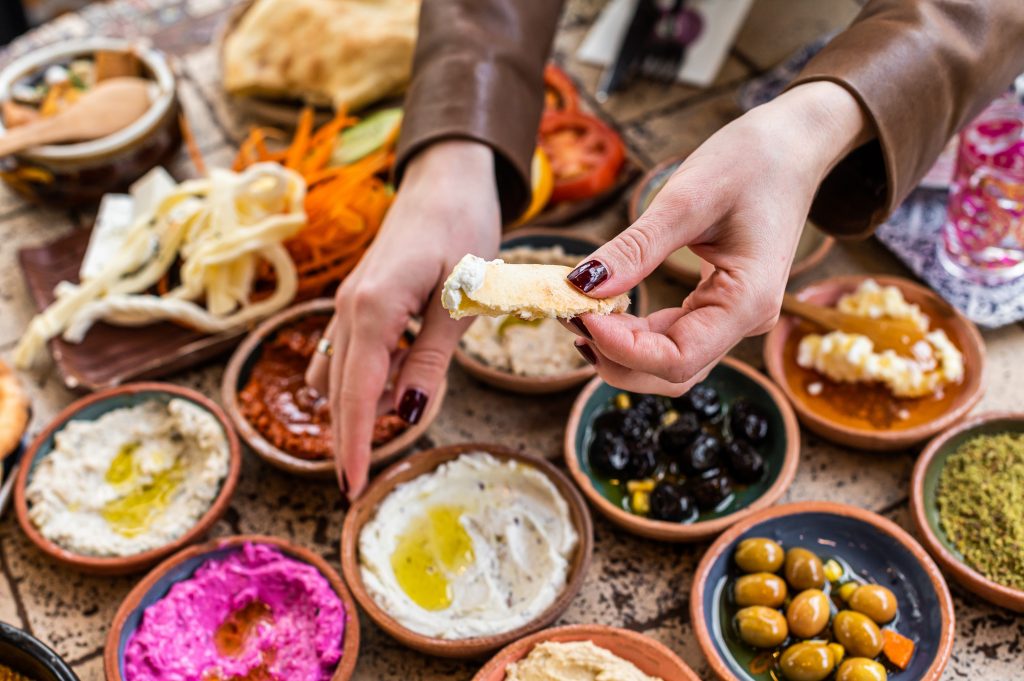Earlier in the year (7th March) was “World Cereal Day”, when food companies extolled the virtues of consuming ultra-processed foods for the “most important meal of the day”.
Many of us in the Western world already need no persuasion: 46% of Americans and 20% of British people start their day with breakfast cereals, and the British spoon £19 billion a year into the coffers of the grain processors.
Cereals are big business! Little wonder that the industry is anxious to increase its share of the breakfast pie. Non-soak cereals first landed on the American breakfast table with John Harvey Kellogg’s “flaked cereals”, patented in 1895. Originally conceived as a bland food to treat dyspepsia (indigestion) in the patients of Battle Creek Sanitorium, cornflakes and their cartoon-embellished, sugar-laden cousins have now found their way to almost every corner of the “civilised” world. Their rise to world domination has had its share of controversies: in 1945, General Mills changed the name of its own brand of breakfast joy from “Cheerioats” to “Cheerios” after it faced a legal challenge from Quaker Oats, who claimed sole rights to Avena sativa’s common name. Kellogg’s had its own bowlful of controversies in 2021, with a $5 million class-action lawsuit against the paucity of strawberries in Strawberry Pop-Tarts© – the grab-and-go, paste-filled XXL biscuit for the time-crunched family. And in November 2021, while the plants struggled to keep up with huge excess demand for ultra-processed foods caused by Covid-19 lockdowns, 1,400 of Kellogg’s workers went on strike for better pay, benefits and working conditions. Kellogg’s responded with its own lawsuit against the union.
“Big Ag” also has a vested interest in cereal consumption. The US government hands out around $20 billion in subsidies, the bulk of which goes to the cereal giants. Government “healthy eating” recommendations around the world are largely based on the grain crops grown by that country. Here in the UK, that takes the form of the “Eat Well Plate” which recommends that just over a third of our plate should be taken up by starchy carbs. In this country, where the land and climate are more suited to growing grass for animal husbandry, farmers were tempted over to grain production after the second world war with the promise of subsidies. Now the animals are fed on grain, wiping out omega-3 levels in meat, and the people are fed on a grain-based diet (more than 50% of calories consumed in the UK are from ultra-processed food). Not surprisingly, the health statistics get more and more worrying every year. In the UK, around 70% of the population is overweight or obese. The net cost to the taxpayer was an estimated £2.47 billion in 2016. 1.02 million hospital admissions were connected with obesity in 2019/2020 – almost a ten-fold increase in a decade. Government “lockdown” responses to Covid-19 have exacerbated the problem in the UK and globally, with weight-related behavioural changes (e.g. increased snacking, alcohol, reduced exercise) and weight gain.
Are breakfast cereals really food?
The industry-backed “World Cereal Day” promotion asks: “Did you know that until the end of 1890s people ate eggs and meat for breakfast?” (Really, Kellogg’s?) It goes on to admit that many still do today (those old-fashioned oddballs). That change in eating habits – from a real-food breakfast to an ultra-processed, refined carbohydrate one – is undoubtedly one of the things that has contributed to rising levels of chronic disease and overweight. One reason is that carbohydrates produce the biggest insulin release: carbohydrate-containing foods break down to glucose, and when glucose (a sugar) is hanging around in the blood, it causes damage. So one of the roles of insulin is to open the gates (the insulin receptors) to let the glucose into the cells, where it’s used to make energy or stored as glycogen until energy is needed. The trouble is, when you eat a bowlful (or sandwich-full) of carbs and your insulin spikes, that’s followed by a big dip in blood sugar. Then you get hungry (or, worse still, “hangry”) and your stomach and brain start clamouring for another hit of carbs.
Various studies have compared the calories eaten after different breakfasts, and generally it’s the breakfasts that are highest in protein and lowest in carbohydrates that are the most satiating, and result in lower calorie intakes during the day.
So, what to eat for breakfast?
So, which kind of breakfast is really the best? Or is it better to skip breakfast altogether? The answer is very individual, depending on health, bio and lifestyle needs and goals, as all good nutrition recommendations are. But there are some basic rules:
Eat real food. Breakfast cereals and bars are ultra-processed foods and are low in micronutrients (despite listing them as added in the ingredients), and Pop-Tarts… well, they can’t remotely be described as food!

Focus on protein and healthy fats, along with some prebiotic foods to nurture your gut microbiota. In fact, what we really need is to escape from the Western idea of breakfast and look to other cultures where the first meal of the day is a flavoursome and nutritious combination of savoury foods.
Treat croissants, toast and jam/marmelade, pastries and anything packaged in a box as occasional treats and not the norm. These are what make you want to eat more, as well as disrupting your blood sugar balance, which should fluctuate gently through the day as you eat and digest. Over the long term, disrupted blood sugar balance can lead to diabetes and other chronic disease (estimated to make up around 70-75% of the NHS budget – or c. £1,000 a year of your hard-earned money). Cheers, Mr Kellogg!
Don’t drink your fruit. Sadly, that glass of orange juice may not be as healthy as you think. While freshly-squeezed orange technically counts towards the government-suggested “five-a-day”, it is packed full of sugar in one quickly digested hit, including the glucose that tells your pancreas to release a shedload of insulin, as well as fructose (a sugar in fruit). Fructose is metabolised mainly by the liver, and high amounts of this sugar is the main cause of non-alcoholic fatty liver disease (NAFLD). In fact, the high-fructose corn syrup in so many processed foods is a major culprit in NAFLD, which, according to the British Liver Trust, is estimated to affect 1 in 5 people in the UK. “Oranges are not the only fruit”, but they are the most popular fruit globally, and one study found that even a higher intake of whole oranges increased the risk of NAFLD significantly. For this reason, your “five-a-day” (or, better still, at least 10-a-day) should major on vegetables, limiting fruit to a fistful a day of lower-glycaemic ones like berries and cherries.
Skipping breakfast – or pushing it back and calling it lunch so that you are doing “intermittent fasting” – can be really beneficial for health as it allows the cells to switch to regeneration and repair rather than burning food to make energy. Longer fasts may not suit everyone. For example, if you have a thyroid condition, fasting for longer than 14-16 hours is not advisable.
Click here for some healthy, satiating breakfast ideas to get started.

References
UK spend on bread and cereals: https://www.statista.com/statistics/289915/expenditure-on-bread-and-cereals-in-the-united-kingdom-uk/
Bhutani, S., & Cooper, J. A. (2020). COVID-19-Related Home Confinement in Adults: Weight Gain Risks and Opportunities. Obesity (Silver Spring, Md.), 28(9), 1576–1577. https://doi.org/10.1002/oby.22904
Błaszczyk-Bębenek E, Jagielski P, Bolesławska I, Jagielska A, Nitsch-Osuch A, Kawalec P. Nutrition Behaviors in Polish Adults before and during COVID-19 Lockdown. Nutrients. 2020 Oct 10;12(10):3084. doi: 10.3390/nu12103084. PMID: 33050404; PMCID: PMC7601522.
Fallaize, R., Wilson, L., Gray, J., Morgan, L. M., & Griffin, B. A. (2013). Variation in the effects of three different breakfast meals on subjective satiety and subsequent intake of energy at lunch and evening meal. European journal of nutrition, 52(4), 1353–1359. https://doi.org/10.1007/s00394-012-0444-z
Günalan E. “Stay at home with bakery products” can be public motto of quarantine days in the early period of COVID-19 outbreak: A nutritional infodemiology study. Int J Gastron Food Sci. 2021 Oct;25:100359. doi: 10.1016/j.ijgfs.2021.100359. Epub 2021 May 8. PMID: 35103091; PMCID: PMC8792530.
Knowler, Kate (2020). Blood Labs: A Guide to Interpreting Blood Test Results for Fatigue. (Independently published)
Kriaucioniene V, Bagdonaviciene L, Rodríguez-Pérez C, Petkeviciene J. Associations between Changes in Health Behaviours and Body Weight during the COVID-19 Quarantine in Lithuania: The Lithuanian COVIDiet Study. Nutrients. 2020 Oct 13;12(10):3119. doi: 10.3390/nu12103119. PMID: 33065991; PMCID: PMC7599784.
Robinson et al. (2021) Obesity, eating behavior and physical activity during COVID-19 lockdown: A study of UK adults
Ruiz-Roso MB, Knott-Torcal C, Matilla-Escalante DC, Garcimartín A, Sampedro-Nuñez MA, Dávalos A, Marazuela M. COVID-19 Lockdown and Changes of the Dietary Pattern and Physical Activity Habits in a Cohort of Patients with Type 2 Diabetes Mellitus. Nutrients. 2020 Aug 4;12(8):2327. doi: 10.3390/nu12082327. PMID: 32759636; PMCID: PMC7468739.
Tovey, M. (2017). Obesity and the public purse: Weighing up the true cost to the taxpayer. Discussion paper: Institute of Economic Affairs.





Leave A Comment